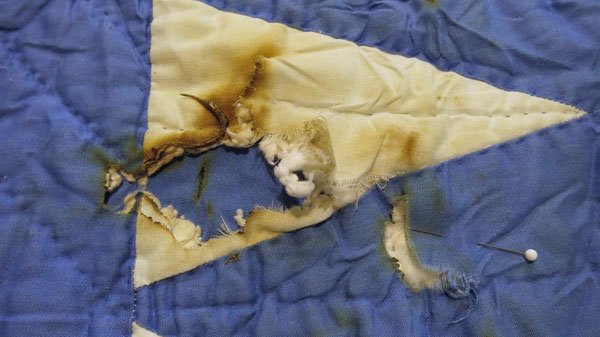How long does a wool quilt last?
We can’t exactly say how long would the wool quilts would last. The quilts made from 100% pure wool would last longer than the wool and cotton mixed quilt. Wool quilts usually maintain their shape so as not to wear and tear like other quilts which is also a factor that make them last longer. The quality of the wool used and the manufacturing technique also determines whether the quilt would last longer or not. Usually, wool quilts last for one or two decades but it also depends on how you use and maintain them. It may last even longer if you take good care of it. Including its durability, the wool quilts have also some other benefits that you would love to know.Benefits of wool quilt
Using wool quilts has certain benefits. Wools are breathable, antiallergenic, moisture-wicking, and incredibly temperature regulating which benefits us for our better sleep. Let’s discuss how.Breathable
Wools are breathable and this property makes them suitable for a variety of climates. They have the ability to keep you warm in winter and cool in summer. You can enjoy wool quilts in almost all seasons of the year although it is used more generally in winter to keep your body warm and cozy.Temperature regulating
Furry animals just can adapt to the temperature very easily, even if it is extremely hot or extremely cold, thanks to their wool which is temperature regulating. Wool could absorb the sweat at the core of its fiber and maintain the layer of dry air next to the skin. Thus, it can internalize the moisture inside and maintains a dry setting outside, due to which wool quilt is supposed to be the excellent temperature regulator.Moisture wicking
We hate the feeling of being wet due to sweating while we are sleeping but with a wool quilt, you don’t have to worry about this wetness. Wool has the property of moisture wickedness. It can absorb your sweat into the heart of its fiber, and also draw off moisture through small openings within the fabric. Thus the surface of the wool would be dry to the touch. With the wool quilt, you don’t have to feel worried about being wet due to sweat as its wool would absorb it providing you with comfortable sleep.Hypoallergenic
Some of you may be tired of the quilts which are allergic to you. With wool quit, you don’t have to worry about the allergy since wools are naturally hypoallergic. Wools not only produce fewer dust particles but also absorb moisture to fight against the dust. They absorb Volatile Organic Compounds (VOCs) which may be the allergy-causing factor. Thus, the wool quilt is a great option for one with sensitive skin as it won’t cause rashes or itching.What will ruin your wool quilt?

Excessive moisture
We must have known about the moisture-wicking property of wool till now. Wool can absorb the moisture of half of its weight without any damage. However, keeping wool wet longer time can damage its fiber. You must not keep the wool quilt moist for a longer time. You should be careful while washing and drying them. it should not be dried hanging up when completely drenched so as to avoid the stretching of the wool quilt. Similarly, keeping the wool in a moist area may lessen the life of the wool quilt. Hence the wool quilt must be stored in a moist-free area for the long run.Pests
Wools are the natural protein that pests and insects love to feed resulting in ultimately damaging to your warm wool quilts. You need to adopt the prevention method to safeguard your quilts against these nasty wool predators. Some methods to repel these pests could be using the lavender scent or spreading the dried lavender in the space you store them. You can also spread cedar ships around your quilt. Lavender and Cedar are natural pest repellants. In the worst condition, you can use the chemical pests repellant too which are easily available in the local market.Washing mistakes
Wools are better not washed in the hot water as they may deform their original shape. Using harsh detergent and bleaching them may destroy the fabric. and decrease the life of the fabric. Thus wool quilts should be washed with proper care, use of the correct detergent and in a gentle cycle, if watched in a machine. Similarly while dying it should not be hung up instead it should be laid down as it is susceptible to being stretched out.Storing mistakes
We generally need wool quilts in winter. Most of the time throughout summer It is stored somewhere in your cupboard, below your bed, or somewhere else. You may wonder if you are storing it properly. As we already mentioned, your woolen quilt can be damaged by pests if you do not store it properly. You must take care that the wool quilt does not get direct sunlight in the place you have stored it. Similarly, storing it in an excessively moist place also could damage it. Thus your wool quilt should be stored in a clean, dust-free, and dry place where there is also no access to direct sunlight. Remember not to store your wool quilts for long periods of time in space-saver bags as this might flatten the wool fibersWays to care for your wool quilt

Give fresh air to your quilt every day
Early in the morning, don’t just make your bed but also give your bedding fresh air. The best way to provide fresh air to your wool quilt may be simply opening the window of your room. This would help to remove the mites in your bedding.
You may even keep your quilt near to window in the daylight for thirty to sixty hours, it would remove the mites further from your quilt.
